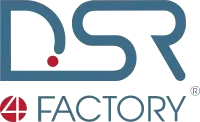The process of implementing the system of production planning and scheduling Siemens Opcenter APS (Preactor) APS in Twinings AB Food in Swarzędz.
Production planning under the Queen’s coat of arms
Twinings plant in Swarzedz, near Poznan is a part of global group of Associated British Food, which ranks among the largest producer of the food products in Europe. The Polish factory producing tea was established in 2010, and now is the largest manufacturing facilities in the entire group. With its size produces 200 tons of blended tea , which gives approx. 75 million bags and approx. 320-400 thousands of cartons or cans of tea sent to customers in a single week. In view of the increasing scale of production, the plant faced the challenge of time-consuming processes of scheduling production and the need of eliminating the manual handling. Twining decided to implement Advanced Planning production and Scheduling Siemens Opcenter APS (formerly Preactor) system. DSR was responsible for the process of implementation the application in Polish and Chinese branch.
Twinings is a Brand of tea, that has a Royal Warrant by appointment to Her Majesty Queen Elizabeth II and His Royal Highness The Prince of Wales. It produces the highest quality products that are currently distributed to 115 countries around the world. In 2010, as a part of global restructuring of the company, it was decided to transfer the plant from the UK to Poland, along with the entire production technology. The first finished products went to customers in 2011. Swarzędzki’s plant currently employs about 320 people and can boasts an impressive surface of approx. 30,000 square meters. Currently, the plant produces about a thousand different brands of premium teas.
Reduce the time, eliminate errors and gain flexibility.
Since its inception in Poland, and , previously for many years all over the Word, Twining AB Food has used the ERP solution. This provides IT support for all seven locations around the world- in Poland, China (near Shanghai) , the United Kingdom, as well as in distribution centres in the United States, Switzerland, Great Britain and France.
– At some point we faced the need to systematise and improve the system of production scheduling. With so many brands became necessary to introduce tools that will reduce the time of their production and making the plan more accurate. Additionally, it will cover any technological factors, present in the manufacturing process. –says Bartłomiej Stryczek, IT chef at Twinings AB Food.
In order to ensure the highest quality of planning and scheduling production, the Twinings company decided to implement the Siemens Opcenter APS (Preactor) system, which is a tool easy to use for planners to support making decision. The main task posed by Twining was to reduce the time-consuming process of scheduling , that is steadily increasing. In addition, the implementation team had to take into account fact that with such large-scale manufacturing the production process is prone to errors.
– We wanted the schedule to be better and not to generate errors resulting from limited availability of people and problems, this being related not so much to ignorance of technology, but the arrangement of the schedule, so that the time between production of one type of tea and the other, was as short as possible. Eliminations of these errors has a positive affect on the profitability of the entire process-adds Bartłomiej Stryczek.
Another benefit which was associated with the implementation of the system of planning and scheduling of production, was to increase the flexibility of the plan, which was made possible by automating the process. Manually changing the plan pf action, from week to week required too much time and in a situation of such an intensive manual labour was simply impossible, declare the representatives of Twinings.
Complex needs, effective solutions
The complexity of the production model in Twining is that there are almost 90 thousand possible combination of blending tea. Currently more than 300 members of Twinings use the system across all branches. The Polish plant is the largest distribution centre in Europe and around the world. Currently, it leads the distribution to 115-120 countries, including the delivery to 200 large customers.
In terms of reduction in the time scheduling and optimisation of the plan, Siemens Opcenter APS (Preactor) helps to divide the time between all the prescribed processes. With knowledge of the efficiency of the machines and duration of specific processes, the system closes orders at an exact time and opens subsequent order. In addition , it can combine small order of the same tea or the same technology, which also affects the efficiency of the plant. The system of planning production and distribution of tea consist of several elements. Siemens Opcenter APS (Preactor) support the planning process, not only locally in Poland but also in factories in China and England. The employees can see what they colleagues are doing at the distribution centre in the world.
– The global planning process is being implemented in the Siemens Opcenter APS system at the facilities in England. Data is entered into our ERP system and from there exported. Siemens Opcenter APS puts the order in the most optimal way, taking into account the time required, volume, technology etc. then produces the proposed plan. The planning department hones this in detail. When planners agree that the plan is correct, it is transmitted back to the ERP system according to Siemens Opcenter Scheduling – added Bartłomiej Stryczek.
Direction: increase of users convenience
Twinings IT team intends to automate the presentation of the production plan, which is generated by Preactor. The solution reports data for employees via an SQL database, however it will continue ongoing work on increasing convenience and simplicity of operation. A common tool used by employees is the Sharepoint application, which use the various databases and clearly presents data to user. The IT team strives to ensure that every worker who has logged in to the computer immediately receive their plan. Subsequent improvements consist in extending the work of the system to the department of blending and to provide planning of orders which includes the materials required. Currently, based on the system, we plan only to create finished products. In the future, we also want Siemens Opcenter APS to look at the MRP, and then at the inventory in stock and stocks due in the factory – added Bartłomiej Stryczek.
Brief description of the project Twininigs AB Foods plants in Swarzędz
- Company profile: a global manufacturer of high-quality teas, selling its products in more than 115 countries.
- Industry: food products
- Business need: support for the scheduling of the production for the second stage of production, in which approx. 50 packaging lines takes place packing almost 1000 brands teas.
- Challenges:
- Time consuming process of scheduling , which in connection with the predicted expansion of the factory is expected to rise,
- Susceptibility to errors associated with a completely manual service process
- Project goals:
- Reducing the time required for scheduling
- Improving the quality of scheduling (fewer errors resulting from manual data entry )
- Increasing the flexibility of the plan.
- The solution : introducing a system of advanced planning and scheduling production using Siemens Opcenter APS. The system implemented by DSR.
- The resulting benefits:
- Reducing time required for scheduling
- Improving the quality plan
- The flexibility of the plan
- Proper sequencing of orders
- Enabling the scheduling of work for the planners divided into areas for which they are responsible
- Optimisation of the plan including the breakdown of orders in relation to the end-time and size
- The number of uses of the system : 300
- The complexity of the model
- 90.000 combinations of blending
- 1.000 produced teas
- Support more then 300 users in places in Poland, UK, China.
- Logistic- distribution to approx. 200 customers worldwide
- Data Exchange interface between factories and data centres in approx.300 programs that run automatically.
- Evaluation:
- Automation presentation of production plan
- Extending the scope of the work of Siemens Opcenter APS for the blending department
- Planning orders taking into account the availability of materials
- Materials stock
- Materials on the way








